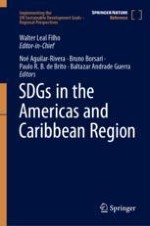2023 | Book
SDGs in the Americas and Caribbean Region
Editors: Noé Aguilar-Rivera, Bruno Borsari, Paulo R. B. de Brito, Baltazar Andrade Guerra
Publisher: Springer International Publishing
Book Series : Implementing the UN Sustainable Development Goals – Regional Perspectives
